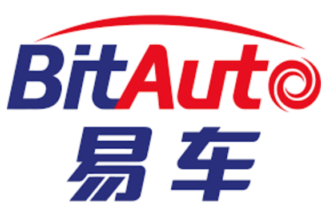Bitauto (BITA) is a heavily shorted, low float stock but there is far more to the bull case than a simple short squeeze. As with my long report on RH in the $80s, this report will attract vocal critics. But by the time BITA hits $100 I expect these critics will have long since gone quiet or found more suitable employment. My view that “BITA rises to $240” is not overly optimistic. In fact, it may prove to be too conservative. Read this report first and then simply decide for yourself if BITA could comfortably exceed $17 billion in market cap in the near future. To me, the answer is a very obvious “yes”.
Short interest in BITA has quietly risen to 11.4 million shares. But because the float numbers are not pulling into Bloomberg, most hedge funds are unaware that this now amounts to 80.5% of the tradable float. BITA recently announced a $150 million share buyback which could now reduce the float to well below 11 million shares. The short interest would suddenly exceed 100% of float. BITA has $1.4 billion of cash sitting on its balance sheet to execute a mere $150 million buyback. The buyback was stated to be within the next eight (8) months.
BITA has deep backing from the biggest tech giants in China, including Tencent, Baidu and JD.com. Their familiar descriptors “The Facebook of China”, “The Google of China and “The Amazon of China” are well worn clichés but they are both accurate and highly relevant to BITA. Their ownership and involvement in both BITA and its largest subsidiary Yixin (HK 2858) is far larger and far more involved than the the market realizes. More than 80% of BITA’s tradable float is now gone and they already own roughly half of the Yixin subsidiary. The tech investors acted as a group, purchasing together via a large special purpose vehicle (“SPV”). They are insiders and their shares cannot be easily sold.
BITA’s founder and chairman William Bin Li also happens to be chairman and founder of electric vehicle maker NIO Motors. NIO is slated to come public on the NYSE within months in a $2 billon IPO which would value NIO at $15 billion. By 2020, NIO has stated that it will be selling electric cars in the US in direct competition with Tesla. More recently, Mr. Li was also appointed as chairman of Dida Chuxing AKA “The Uber of China”. Mr Li is currently owns over 10% of the outstanding shares of BITA. Mr. Li is very visibly employing the same tactics and technology approaches used by Apple and FB to conquer all market share in each of his multiple businesses.
With RH, it was “capital structure engineering” that took the stock from $20 in 2017 to $160 in recent weeks. RH was an “8 bagger” from its lows despite its visibly weak fundamentals. The upside with BITA is vastly greater than what we saw with RH, for two reasons. First, the capital structure engineering is far more aggressive with BITA than it ever was with RH. This includes the same sequenced tactics seen at RH: leverage, float reduction, equity/option grants and a share buyback, all coupled with an announced expansion plan. Second, in contrast to RH’s weak fundamentals, the business prospects and cash generation for BITA are extremely strong. This can be clearly seen by comparing BITA to its competitor Autohome. BITA is now rapidly surpassing Autohome in revenues and growth. Yet Autohome is valued at over $12 billion. The only reason for BITA’s bottom line weakness is that it continues to spend aggressively to secure even more growth. This expensive land grab tactic is exactly what Facebook was doing at the time of its IPO in 2012, and its shares were similarly pummeled down to $17. FB currently trades at around $200.
The auto market in China continues to be one of the largest, fasting growing and most profitable consumer segments in the world. This is why BITA continues to grow revenues at over 50% per year for the past five years, even while keeping gross margins steady at 60-80%. The partnerships with the Chinese tech giants goes both ways. Not only are they eager to secure a piece of BITA’s fast growing penetration into this market, but they are also actively sharing their own mass targeted data with BITA to fuel BITA’s growth even further.
This report is the opinion of the author. It is not a recommendation for anyone anywhere to do anything at any time. Do your own research, form your own opinions. The author is not an investment advisor. The author may conduct transactions on various securities mentioned in this report (or competitors, comparable companies, other securities etc.) within 72 hours or at any time thereafter. The author is long BITA.




